The abolitionist movement was at its height during the early 1800s and lasted until well after the Civil War ended. In the initial stages of the movement, the abolitionists wanted immediate emancipation of all slaves, and they sought to end racial segregation and discrimination. Although the beliefs of the abolitionists were strong during the American Revolution, it did not become a unified movement until the 1830s.
One of the main abolitionists, William Lloyd Garrison, began publishing a newspaper, The Liberator, which played a major role in the abolitionist movement. The newspaper advocated the immediate end to slavery. It was published for nearly 35 years.
Click on this link to access The Liberator Files, a compilation of selected subjects related to the abolitionist movement.
The American Anti-Slavery Society was an abolitionist society founded by escaped slaves and whites that published a weekly newsletter titled the National Anti Slavery Standard.
The society denounced slavery as a sin and demanded that it end immediately. Members of the society supported nonviolence and condemned racial prejudice. The American Anti-Slavery Society eventually established hundreds of branches throughout the free states. The North became bombarded with antislavery literature, agents, and petitions demanding that Congress end federal support for slavery.
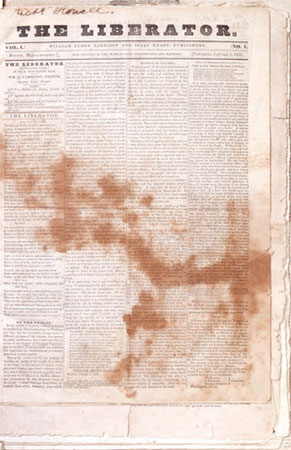
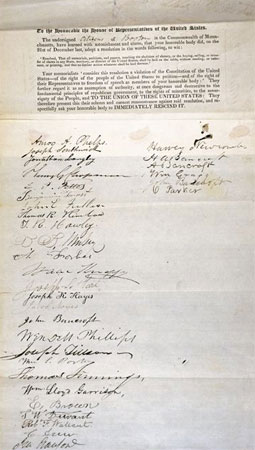
The federal government responded to the anti-slavery movement by passing a "gag rule." Congress imposed this rule to stop any discussion or actions on anti-slavery. Those who supported the gag rule expected it to stop the anti-slavery petitions that were being sent to Congress, but the opposite was true. Congress continued to receive petitions, most of which opposed the gag rule.
The increase in petitions proved that the anti-slavery movement had spread throughout the North as abolitionists pointed out that the South was working to preserve slavery and deprive all Americans of their civil liberties.
This petition (pictured left) is signed by several well-known abolitionists, including Wendell Phillips and William Lloyd Garrison.
William Lloyd Garrison was the editor of the abolitionist newspaper, The Liberator. He was one of the founders of the American Anti-Slavery Society; he advocated for the immediate emancipation of slaves in the United States.
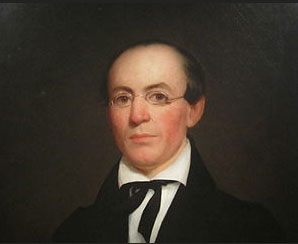
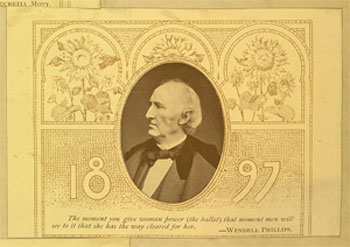
Wendell Phillips was a famous orator and abolitionist who advocated for equal rights for slaves and American Indians. He left his law practice to become a member of the American Anti-Slavery Society after watching a lynch mob attempt to hang William Lloyd Garrison, who spoke out against slavery. Phillips became known for making stirring speeches that furthered the causes of the abolitionist movement.
Just as the abolitionist movement gained momentum, members of the movement found themselves opposing each other. They disputed over the inclusion of equal rights for women in their crusade; those who opposed felt that the movement was becoming too political. The American Anti-Slavery Society split in 1840, but the work of the society made a lasting impact on the movement.
After 1840, the abolitionists influenced many facets of American culture and society. Abolitionism influenced political life, religion, and even literature. Read about the famous abolitionists below and learn about how they influenced American society.
Frederick Douglass escaped slavery and later became one of the leading abolitionists. His oratory and writing skills defied the notion that slaves were ignorant and unable to be educated. He proved that slaves could be contributing American citizens. Douglass published his autobiography, Narrative of the Life of Frederick Douglass, an American Slave, although he risked his own freedom in the process.
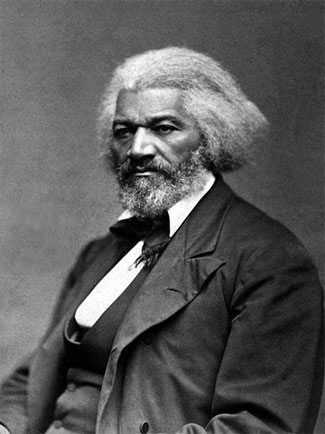
The abolitionist movement permeated the religious and educational landscape of America. There were independent "Free Churches" established that supported the ideals and beliefs of the abolitionists. Oberlin College was founded by abolitionists as the first racially integrated and coed institute of higher learning.
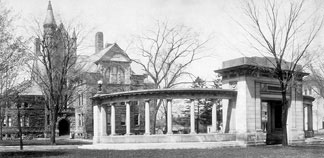
Female abolitionists played a major role in the reform movement. Most women abolitionists were also active in the women's rights movement. Elizabeth Cady Stanton and Lucretia Mott, leaders in the abolitionist movement, went on to become prominent leaders in the women's rights movement. Read the information on female abolitionists below to learn more.

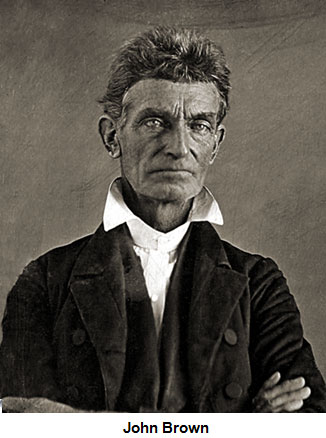
One of the most controversial abolitionists is John Brown. He was a radical abolitionist who believed in violently overthrowing the slavery system. Brown and his sons led attacks on pro-slavery residents. Brown said that his actions were the will of God, and he became a hero to those in the North who opposed slavery. In early 1858, Brown enlisted a small army of other radicals whose mission was to start a rebellion among the slaves. In 1859, Brown and 21 of his members attacked the federal arsenal in Harpers Ferry. The group aimed to capture supplies and use them in a slave rebellion. Brown was captured during the raid and later hanged, but he was remembered as an anti-slavery icon.
 Click on the link below to watch the video. Answer the questions that follow in your notes.
Click on the link below to watch the video. Answer the questions that follow in your notes.
John Brown
- How was John Brown viewed by people in the North as opposed to those in the South?Interactive popup. Assistance may be required.
Click here to compare your answer
- Why did John Brown attempt to capture Harpers Ferry? Interactive popup. Assistance may be required.
Click here to compare your answer
- The participation of slaves in this rebellion was important for Brown's success. Why do you believe the slaves did not participate? Interactive popup. Assistance may be required.
Click here to compare your answer
By the 1850s, the abolitionist movement had gone through another change. There was conflict within the movement as blacks began to complain about the racist behavior of some of the white abolitionists. Sectionalism became a larger national issue than slavery and some of the abolitionists' causes were swept into the politics leading up to the Civil War.
The final split in the abolitionist movement came in 1865 when the passage of the 13th amendment abolished slavery. Many, such as William Lloyd Garrison, felt that this made the American Anti-Slavery Society and groups like it unnecessary. Others in the movement, such as Wendell Phillips, felt that it was important to strive toward political equality for black males and guarantee freedom for former slaves. Although Garrison wanted to disband the society, his opponents were able to keep the group going until 1870 when the 15th amendment extended voting rights to black males. At this point, the society had completed its mission.
Sources of images used for this section as they appear, top to bottom:
- 1831The Liberator, M2545, Wikipedia
- Petition of Amos A. Phelps and 31 others, citizens of Boston, Mass. for the rescinding of Res. of December 21, February 14, 1838, National Archives
- William Lloyd Garrison at National Portrait Gallery IMG 4392, Billy Hathorn, Wikipedia
- Wendell Phillips, Millers NASWA Suffrage Scrapbook, Library of Congress
- Frederick Douglass Portrait, Fastfission, Wikipedia
- Oberlin Arch Small, Nordelch, Wikipedia
- Lucy Stone, Miller NASWA Suffrage Scrapbook, Library of Congress
- Elizabeth Stanton, Paola Severi Michelangeli, Wikimedia
- Lucretia Mott, F. Gutekunst, Library of Congress
- John Brown daguerreotype c1856, Siscyphos23, Wikipedia







